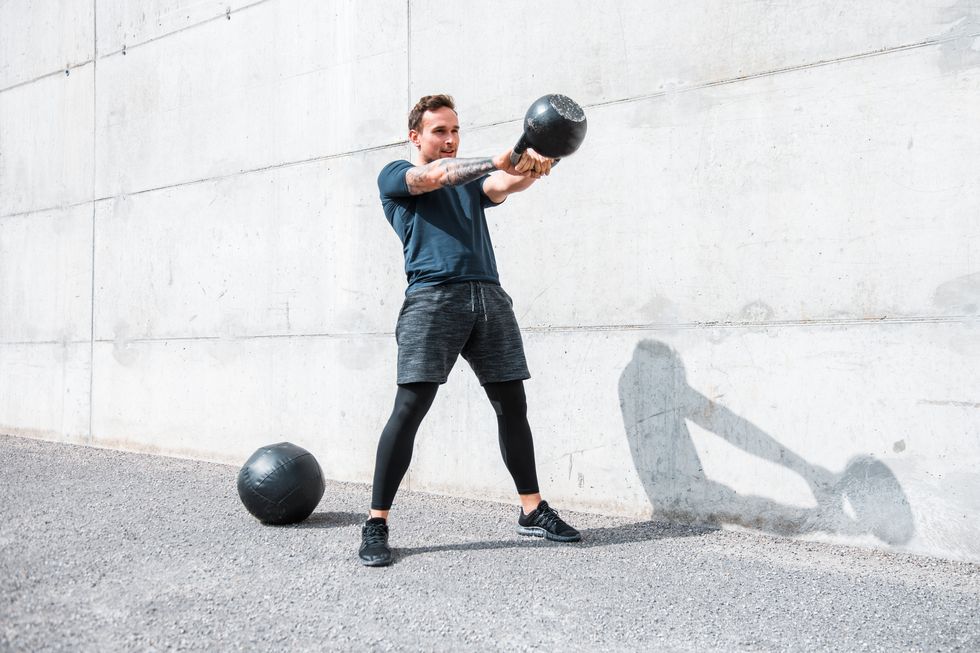
Ideal for developing power, speed, strength and torching major calories, the kettlebell swing is arguably one of the best strength and conditioning exercises available. The goal of the movement is to develop power through the hips with a dynamic hinging motion, similar to a jump.
To prevent injury and get the most out of this valuable exercise, proper form is crucial throughout the entire movement. The big takeaway is the kettlebell swing is not a “squat and a lift” but rather a “hinge and a hike.” Read on for a step-by-step approach to the perfect kettlebell swing.
THE DEADLIFT/HINGE
To master the perfect hip hinge, begin with your feet about shoulder-width apart. Stand with a strong posture grasping the handle of the bell. With only a slight knee bend, drive your hips backward, lowering the kettlebell to a point just below your knees. It is essential you maintain the natural curve of your lumbar spine (lower back) throughout this process. Press your feet into the floor, engage your glutes and return to a stand with your shoulders pulled down and back.
JUMP WITH ARM DRIVE
The neat thing about perfecting the hinge — which hopefully you did during your deadlift practice — is that it carries over to your jumps and your kettlebell swings. This jump with arm drive simply helps add power to the hinge, preparing you for adding weight in the next step.
With your feet about shoulder-width apart, drive your arms back while simultaneously hinging at your hips. Remember, the hinge is a minimal bend at the knees and a large one at the hips. With speed, simultaneously drive your arms back up past your thighs while unhinging your hips and go airborne. Land with soft knees, reset and repeat.
THE KETTLEBELL SWING
With the kettlebell a few feet in front of you, stand with your feet slightly wider than shoulder-width apart. Hinge forward with a neutral spine, grabbing onto the handle of the kettlebell, and hike it between your legs (as the center does when hiking a football to the quarterback). Rapidly extend at the hips and let the kettlebell float in front of your shoulders. Repeat for the desired number of repetitions or time.
THE TOWEL SWING
Time to check your work. Consider the “towel swing” test to ensure you are moving with speed and power through your hips, rather than lifting with your arms.
Begin by wrapping a hand towel around the handle of your kettlebell. With your feet a little wider than shoulder-width apart and the bell slightly out in front of you, hinge forward, grasp the towel with both hands and “hike it” between your legs. Extend your hips and stand tall with speed and power, allowing the kettlebell to float in front of you at shoulder height. If the swing was performed correctly, the bell, towel and arms should be in line throughout the entire rep.
THE RETURN
The full kettlebell swing isn’t complete until the bell is safely “parked” back onto the floor. When you are finished with your set, let the kettlebell passively slow down, hinge forward with a strong core and neutral spine, and place the bell down between your feet. Do not relax the core or round your back until the kettlebell is planted on the ground.
THE BOTTOM LINE
A popular and effective exercise, the kettlebell swing should be a key move in your workout routines. However, if done improperly, you could be wasting your time or worse — setting yourself up for injury. Ensure you begin with a perfect hip hinge, “hike” the bell, drive your hips with a tight core, and stay braced until the kettlebell is safely at rest on the floor.